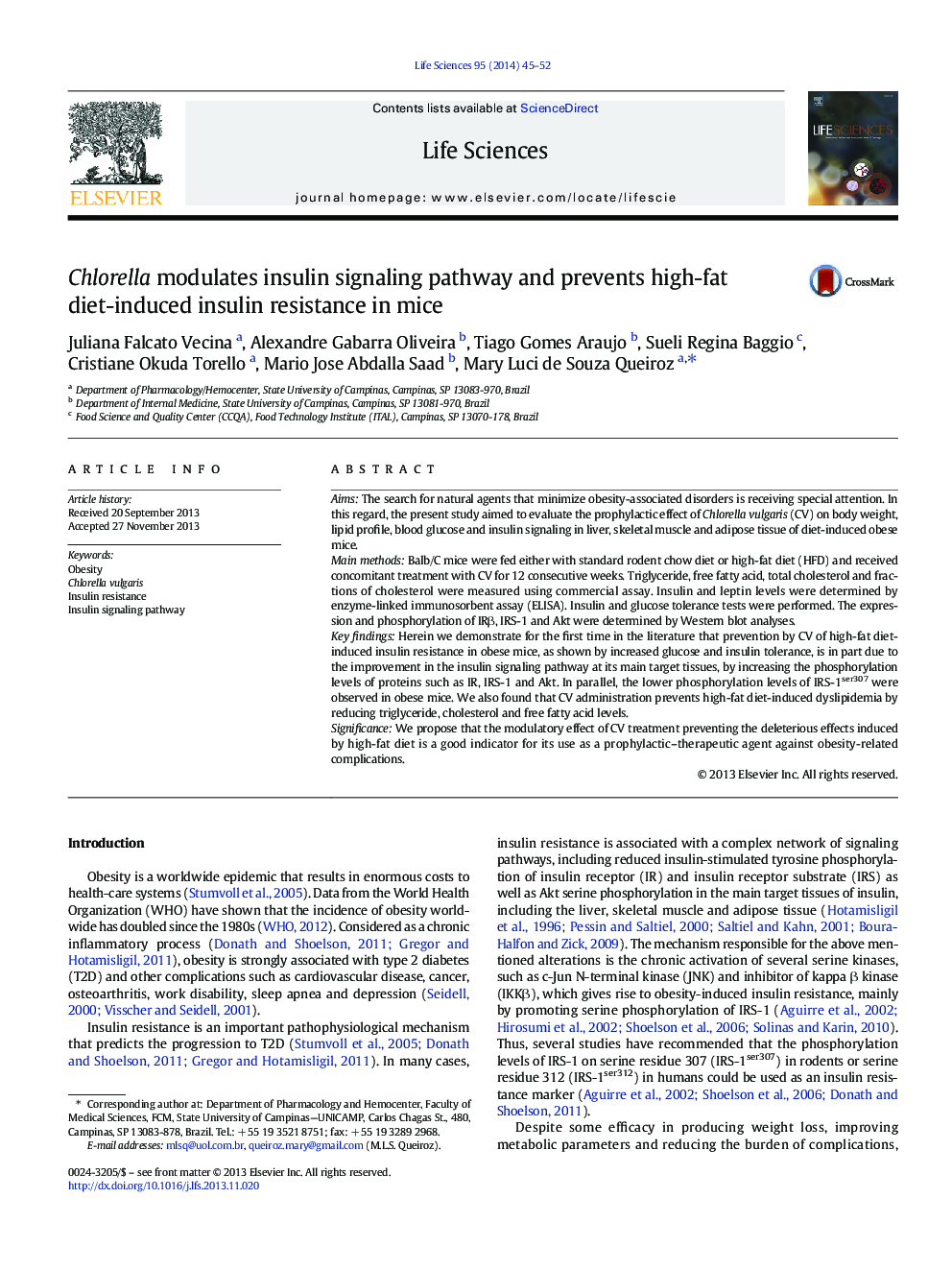| Article ID | Journal | Published Year | Pages | File Type |
|---|---|---|---|---|
| 2551294 | Life Sciences | 2014 | 8 Pages |
AimsThe search for natural agents that minimize obesity-associated disorders is receiving special attention. In this regard, the present study aimed to evaluate the prophylactic effect of Chlorella vulgaris (CV) on body weight, lipid profile, blood glucose and insulin signaling in liver, skeletal muscle and adipose tissue of diet-induced obese mice.Main methodsBalb/C mice were fed either with standard rodent chow diet or high-fat diet (HFD) and received concomitant treatment with CV for 12 consecutive weeks. Triglyceride, free fatty acid, total cholesterol and fractions of cholesterol were measured using commercial assay. Insulin and leptin levels were determined by enzyme-linked immunosorbent assay (ELISA). Insulin and glucose tolerance tests were performed. The expression and phosphorylation of IRβ, IRS-1 and Akt were determined by Western blot analyses.Key findingsHerein we demonstrate for the first time in the literature that prevention by CV of high-fat diet-induced insulin resistance in obese mice, as shown by increased glucose and insulin tolerance, is in part due to the improvement in the insulin signaling pathway at its main target tissues, by increasing the phosphorylation levels of proteins such as IR, IRS-1 and Akt. In parallel, the lower phosphorylation levels of IRS-1ser307 were observed in obese mice. We also found that CV administration prevents high-fat diet-induced dyslipidemia by reducing triglyceride, cholesterol and free fatty acid levels.SignificanceWe propose that the modulatory effect of CV treatment preventing the deleterious effects induced by high-fat diet is a good indicator for its use as a prophylactic–therapeutic agent against obesity-related complications.
